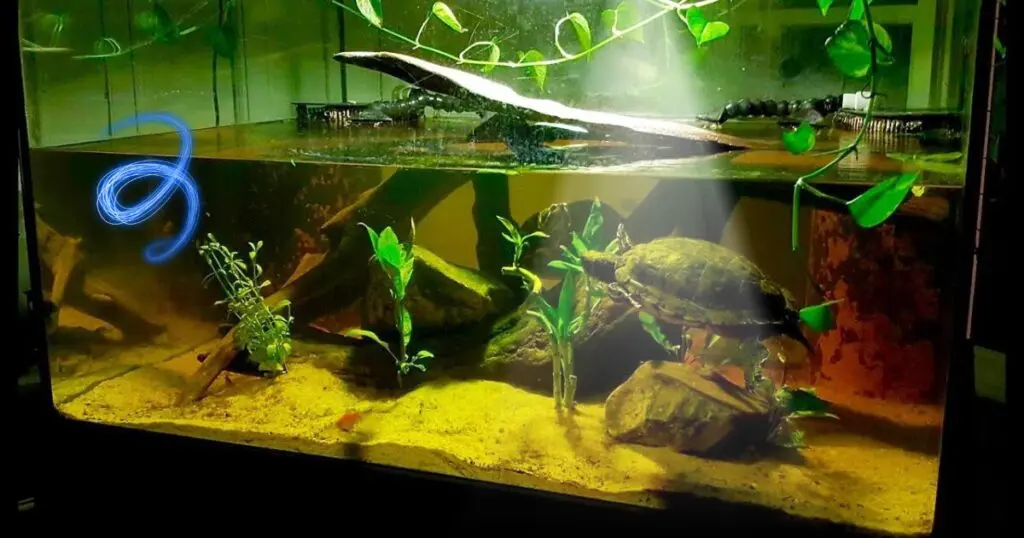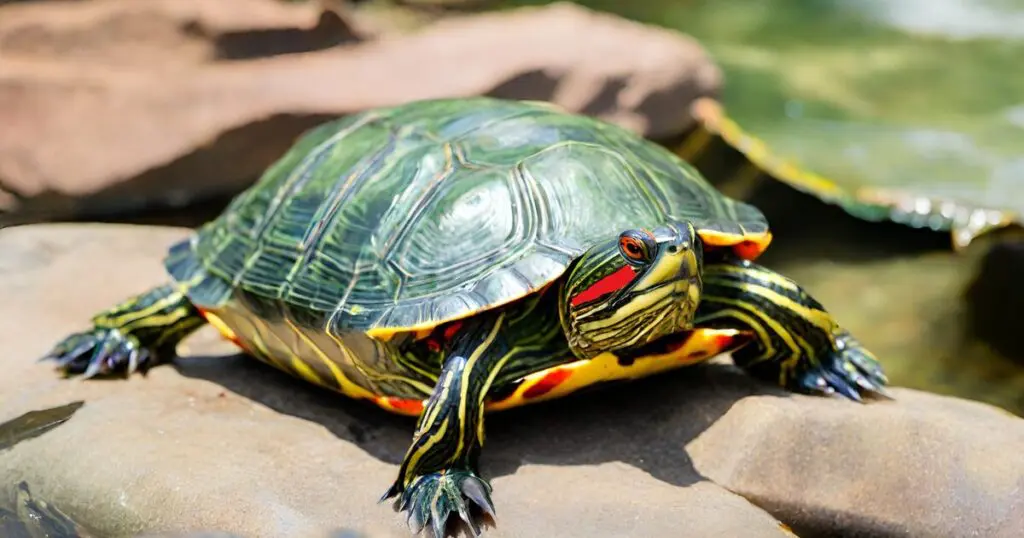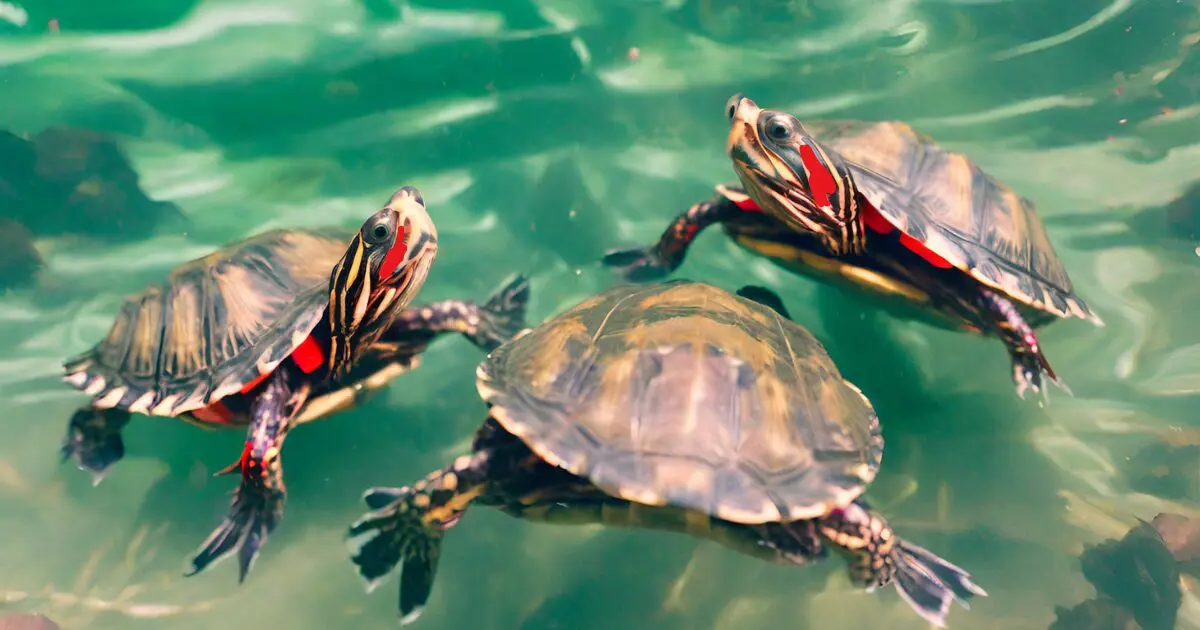Red-eared sliders are semi-aquatic turtles and are popular as pets across the United States. As an owner, you must be a little more careful about them than other pets. One thing that might baffle you is the question, “Can red-eared sliders drown?”
Yes, red-eared sliders can drown, especially young ones. They need a basking area that allows them to easily climb out of the water if they get tired. However, if the water is too deep for them to reach the bottom, they can get tired and drown. Provide a shallow basking area to prevent drowning.
Getting confused? Don’t worry; this article will help you understand why they drown and how to prevent it. It’s a must-read if you own a red-eared slider.
How Can Red-Eared Sliders Drown?
It’s weird that an aquatic animal is getting drowned. Fishes are all the water, but they don’t get drowned. Then what is wrong with RES turtles? Well, the first thing is that these turtles are actually semi-aquatic.
Similar to sea turtles, RES cannot breathe underwater. They breathe air and, therefore, often have to come out of the water. The primary reason for such drowning accidents in captivity occurs due to improper enclosure setup.
RES turtles are small turtles. They can get tired by swimming for a few minutes and need to reach their basking area. Excessively deep water poses a danger for them. They may not have the strength to reach the surface of the air.
Additionally, entanglement in tank decorations, rocks, or even their own shed skin can trap them underwater. Finally, illness or injury can impair their swimming ability.
Signs of A Drowning Red-Eared Sliders
Don’t mistake your RES swimming for a sign of drowning or vice versa. This way, it can lead to accidents. Therefore, knowing about the signs of drowning is important.
- Lack of movement. This is the most crucial sign, of course. If your slider isn’t moving at all, it’s a critical emergency.
- Try touching the turtle with a fingertip. If it does not move, then pay attention.
- Red-eared sliders bob their heads from time to time. If it does not do this for a long time, then you must take a look at it.
- Open mouth. A drowning slider might keep its mouth open, gasping for air.
- Even if the slider is moving slightly, it might appear weak and sluggish. It may drown soon. So, take it out of the water yourself.
What to Do When A Turtle Is About to Drown?

Upon noticing the signs, don’t just sit up. You need to take immediate action. Here are the things you need to do:
- Remove the turtle from the water immediately. Remember, every second counts.
- Clear its mouth and nostril. Use a moistened cotton swab to remove any debris.
- Drain excess water.
- Hold the turtle head-down/tail-up. This allows water to drain from its mouth and airways.
- Extend and retract the front legs repeatedly to help expel water.
Also, take steps to keep the turtle warm to stimulate its metabolism. Use a heating pad on low or place it in shallow, warm water, around 80°F.
What to Do with a Drowned Turtle
Do you suspect the turtle has drowned already? Bring out the turtle immediately and check if it has life in it. Perform the above-mentioned task and then visit a vet.
Even if the turtle appears lifeless, keep it warm. Place it on a flat surface with a heating pad set on low or in shallow, warm water. This can stimulate its metabolism and potentially help revive it.
How to Prevent Turtles from Drowning?
Taking proper precautions can significantly reduce the risk of your turtle drowning. Here are some key areas to focus on:
Appropriate Enclosure Setup

Tank size is pretty important when looking after your turtle. You cannot just set a tank of any size. That increases the drowning risk. The ideal size is about 20 gallons for your red-eared slider. When it gets bigger or adult, it requires a minimum of 50 gallons. However, making it too large is not safe either.
The ideal tank size depends on the size of the turtle. For every inch of the turtle, it needs 10 gallons size. So, a 4-inch RES needs about 40 gallons tank size. Thankfully, they do not get much bigger. They do not get bigger than 11 inches, which makes them a little bigger than box turtles in comparison.
Water Quality and Maintenance
Regular cleaning tank water is crucial. Remove debris and perform partial water changes. Dirty water can lead to lethargy and hinder the turtle’s ability to swim properly. The temperature of the water is equally important, too.
Ensure the water temperature is within the optimal range for your specific turtle species. Using a good quality filter can help maintain water quality. Avoid tap water that contains chlorine and fluoride.
Supervision and Awareness
Although adult turtles are unlikely to drown, you need to be aware of the young ones. Hence, you should never leave young turtles unattended. Baby turtles are particularly vulnerable to drowning due to their size and limited mobility.
Cover any openings in the enclosure that could trap the turtle or prevent it from the water. Monitor your turtle’s health regularly. Illness or weakness can impair its ability to swim and increase the risk of drowning.
Seek Veterinary Guidance
Consult a veterinarian specializing in reptiles for regular checkups and advice. They can provide personalized recommendations based on your specific turtle’s needs. You must be aware of potential health concerns.
FAQ

The following information can help you take care of your red-eared sliders.
Can red-eared sliders sleep underwater?
Yes, red-eared sliders can sleep underwater. They often rest on the bottom or float, using their throat to stay buoyant. While they can hold their breath for long periods, they will occasionally surface for air.
How long can a red-eared slider stay in the water?
Red-eared sliders can stay underwater for extended periods. It can be between 4-7 hours when sleeping or inactive. Their lowered metabolism allows for efficient oxygen absorption through their skin during these times.
Do red-eared sliders need oxygen underwater?
Yes, red-eared sliders do need oxygen underwater. However, they have adaptations that allow them to absorb some oxygen through their skin and throat. It enables them to stay submerged for extended periods without actively breathing air.
Conclusion
So, you see, red-eared sliders can actually drown in water even though they are semi-aquatic species. You have to take care of the young turtles to protect them from drowning. Follow the precautions mentioned above, and hopefully, you will be able to avoid accidents and unwanted incidents.
